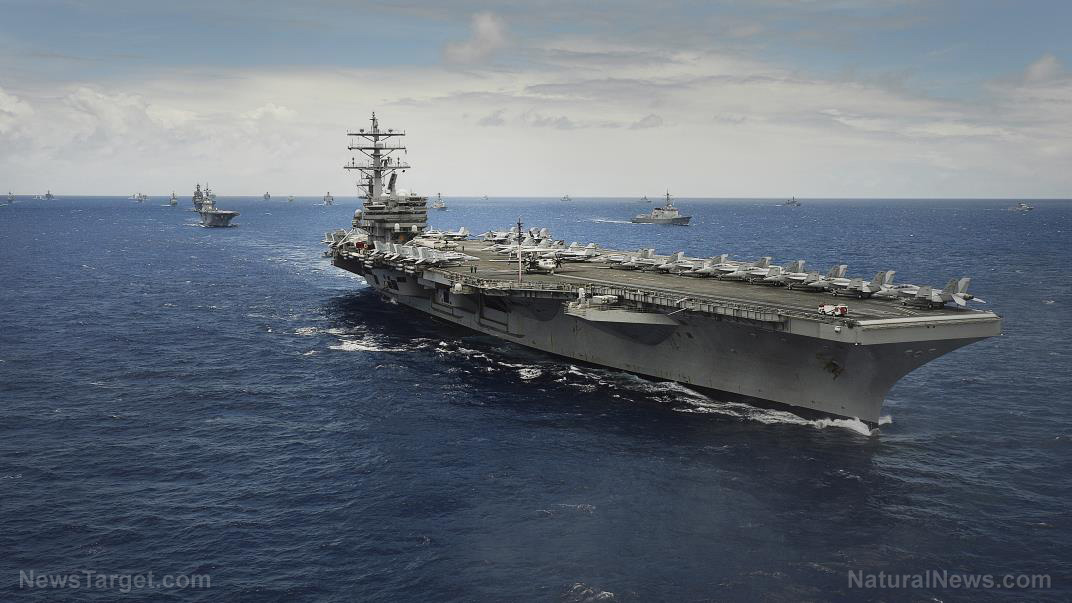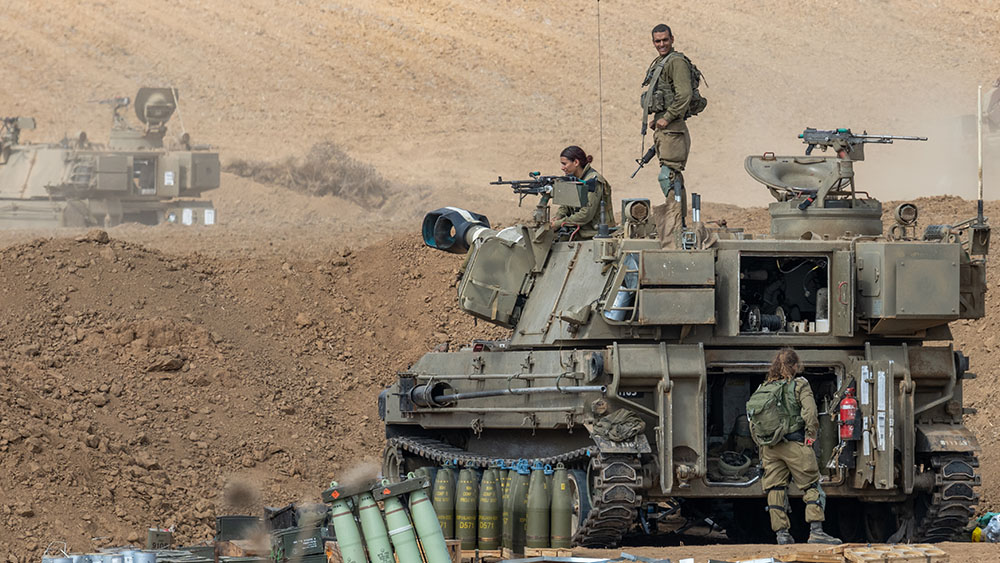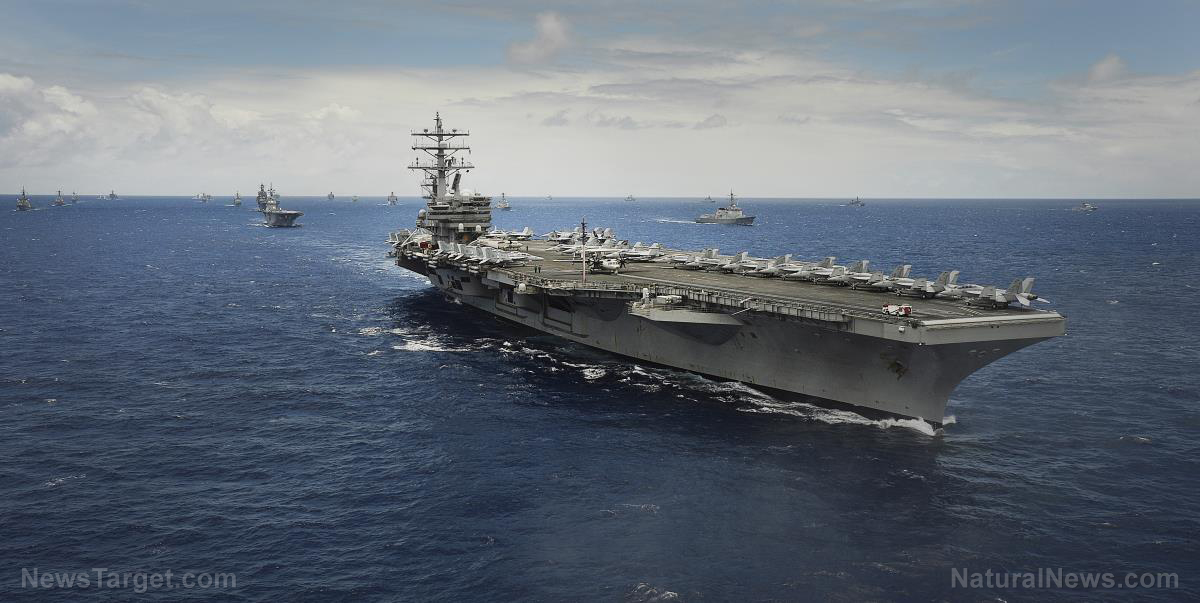 Parler
Parler Gab
Gab
- A U.S. Navy MH-60R helicopter and an F/A-18F Super Hornet crashed in the South China Sea on October 26 within 30 minutes of each other.
- All five personnel involved—three from the helicopter and two from the fighter jet—were rescued safely and are in stable condition.
- Both aircraft were operating from the USS Nimitz, the Navy's oldest active aircraft carrier, which is concluding its final deployment.
- The incidents occurred amid heightened tensions with China over its territorial claims and coercive actions in the South China Sea.
- The crashes are under investigation, with preliminary speculation from officials ruling out foul play.
A chronology of crises
The sequence of events began at approximately 2:45 p.m. local time. According to statements from the U.S. Navy’s Pacific Fleet, the MH-60R Sea Hawk, assigned to the “Battle Cats” of Helicopter Maritime Strike Squadron 73, went down while conducting routine operations. Just thirty minutes later, at 3:15 p.m., an F/A-18F Super Hornet from the “Fighting Redcocks” of Strike Fighter Squadron 22 also crashed into the sea. The close timing of the incidents, while officially classified as separate, prompted immediate investigations to determine the root causes. The Navy confirmed that all crew members from both aircraft were successfully retrieved.The Nimitz and a pattern of mishaps
The incidents mark a difficult final chapter for the USS Nimitz (CVN 68), the Navy’s oldest active aircraft carrier. The Nimitz is currently returning to its home port in Washington state after a deployment that saw it operate in the Middle East as part of the U.S. response to Houthi rebel attacks on commercial shipping. This deployment is its last before the vessel is decommissioned. The crashes aboard the Nimitz follow a troubling pattern of recent naval aviation mishaps, particularly involving aircraft carriers deployed to high-tension regions. Another carrier, the USS Harry S. Truman, suffered a series of costly incidents in the Red Sea over the past year, including multiple F/A-18 losses due to landing and deck-handling failures.Strategic backdrop: A tense theater
The twin crashes occurred in one of the world's most strategically vital and politically volatile regions. The South China Sea is a focal point of U.S.-China competition, with Beijing asserting sweeping—and internationally disputed—territorial claims. In the weeks leading up to the incidents, U.S. officials had publicly condemned China’s “increasingly coercive actions” toward its neighbors, particularly the Philippines. The presence of a U.S. carrier strike group in these waters is a core element of American policy to ensure freedom of navigation and counter what it views as destabilizing behavior by China. This context elevates the operational readiness of forward-deployed assets from a matter of training to a component of national deterrence strategy.The investigation and official response
The Navy has launched standard investigations into both crashes, which will examine a range of potential factors, including:- Mechanical failure or maintenance issues
- Human error
- Environmental conditions and weather
- Fuel quality and other logistical concerns
An enduring challenge
The loss of two multimillion-dollar aircraft in a single day, even without casualties, serves as a stark reminder of the extreme demands placed on the U.S. Navy’s fleet and personnel. Operating advanced fighter jets and helicopters from the confined, moving deck of an aircraft carrier remains one of the most complex and hazardous military endeavors. As the service grapples with an aging carrier fleet and the persistent challenge of maintaining readiness amid global commitments, incidents like those aboard the USS Nimitz highlight the fine line between projecting power and confronting peril. The safe return of all five crew members provides a positive conclusion to a dangerous day, but the investigations to come will be critical for preventing a recurrence in an increasingly contested Pacific. Sources for this article include: TheEpochTimes.com CTGN.com APNews.comRubio defends Israeli airstrike as accusations of Gaza ceasefire violations mount
By Cassie B. // Share
Tucker Carlson declares Putin as the “most popular leader in the world”
By Kevin Hughes // Share
Amazon plans to axe 30,000 corporate jobs in massive AI-driven layoff wave
By Cassie B. // Share
Trump blames “bad fuel” in USS Nimitz aircraft crashes as Navy launches probe
By Kevin Hughes // Share
New AI research tool aims to examine vaccine data and UBI implications
By finnheartley // Share
Common antidepressants disrupt heart function and cause significant weight gain
By ljdevon // Share
Peer-reviewed study links UFO sightings to nuclear tests
By kevinhughes // Share
Tucker Carlson declares Putin as the "most popular leader in the world"
By kevinhughes // Share









